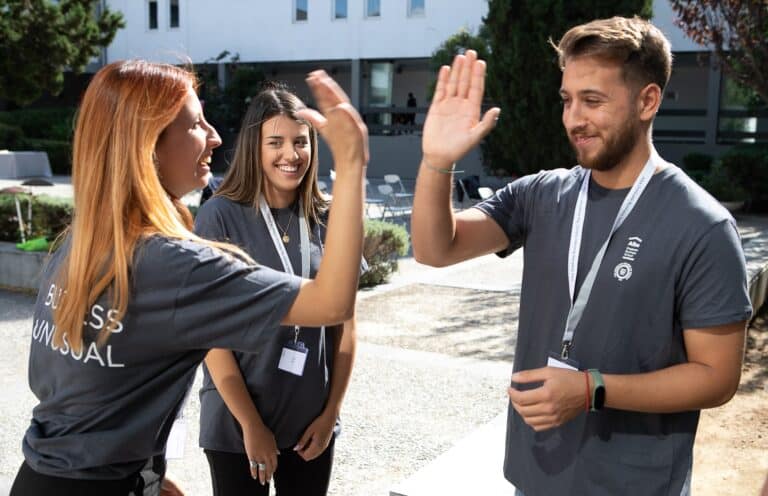Writing essays, papers, cover letters or just emailing your professors is an indispensable part of student life. However, all of these writings say a lot about ourselves not only by what they say but also by how do they say it. In this article, you can find a step-by-step guide on how to correct your writings similarly as a qualified copy-editor would do. Let’s see how you can achieve error-free writings!
Correct your writings yourself Vs. Leave it to a copy-editor
Even before we get into the work, it is essential to make clear that a non-qualified person would probably not achieve the same results as a professional copy-editor. Therefore, you should consider having your text professionally corrected in cases of more complex or more important writings, such as a doctoral thesis or academic articles. If that’s not the case, the following guide can be applied to any other writings, so let’s get into the work!
Before you write the actual text
I recommend sticking to guidelines right from the beginning. If you don’t have any, you should at least look up some basic information about the kind of text you’re working on. Styling and organizing your text according to some previous rules will make further corrections much more natural.
Related:
[Do You Want To Write Great Articles? Use LaTeX]
[How To Improve Your Communication Skills]
Reviewing the text
Once your text is written, you should correct any mistakes you might have done. I recommend that first of all; you quickly check if your writing meets the basic rules you were given (such as words or pages limit). Once that is done, you might proceed to content and style revision.
Content revision
You want to achieve a text that is accurate and makes sense. For that, make sure you cite or paraphrase all the used sources and check that they’re correct. Make sure the terminology you use is right, your paragraphs correlate one to each other, and that your thesis statement matches the content of your writing. Ensure that your writing has all the content parts required and that it meets its purpose.
Style revision
Your ultimate goal in this stage is to make sure your text is understandable and easy to read and that the style and expressions you used match the kind of text you are writing. In academic works, avoid any subjective voices. Make sure there are no style and voice changes (using first the plural and then singular, starting with a formal way and ending up with colloquial style). Correct any inaccurate or non-fitting words and any grammar mistakes, such as incorrect tenses or phrase structures. Try to avoid repetitions, too simple or too complicated structures.
Orthography and typography correction
It is crucial to do the orthography and the typography correction only after revising the content. You are more likely to make significant changes in the previous steps, and you might need to fix new things during that process.
First of all, quickly clean your text up. That means, correct any misspellings, incorrect spacing, punctuation or inaccurate diacritical marks. If you’re using a text editor, you can set up automatic corrections which will help you with this step, or you can use any autocorrecting tool, such as Grammarly or similar. However, DO NOT rely on them entirely and always check the text yourself.
Now it is time to adjust your text to current orthography rules. That means, you should look up the correct writing of foreign countries or names, the proper use of numbers (spelled out or in numeric form?), abbreviations, capital letters, quotation marks, brackets, dash or any other sign. You should also investigate how and when a bold, italic, small capitals or underlined typeface should be used. If that’s the case, make sure that any scientific or other symbols are inserted correctly.
Last but not least, unify your text. Make sure that if you make a decision, you keep that during the whole document. Avoid alternating British and American English spelling, avoid alternations such as “email”, and “e-mail” or writing numbers both spelled out and in numeric form (for the same concept).
Related:
[CV: 5 Content Mistakes To Avoid]
[Curriculum Vitae: Format Mistakes To Avoid]
Formatting
Make sure that the graphic design of the text is unified and that it makes your writing easy to read and pleasant to your reader’s eyes. To achieve that, check if your document meets the formatting requirements established in the guidelines. Some of the aspects you should pay attention to are: cover page, page numbers, titles, subtitles, headlines, page heading and footer, citations and paraphrases, type of paragraphs, indentations, way to justify the lines, line spacing, text font and size, etc. Check if the index and bibliography are done correctly. Make sure there are no widow or orphan lines or words and that any nontextual content is correctly inserted (such as images or graphs).
Last amendments
Before printing out your text, I strongly recommend doing one last correction, as you might have accidentally overlooked some mistakes or made new ones. To polish your manuscript, pass it again through an autocorrecting tool and reread it to make sure everything is OK. Once you print it out, give it a last look to check if the layout is correct (saving your work in pdf or any similar program should avoid any automatic changes your text editor might do).
Conclusion
As you can see, correcting and editing any written text is quite a complicated and tedious process with many steps. However, once learned, it will become automatic and will allow you to correct your writings in a more “professional” way, which will make you feel more confident about them and will ultimately give a better image of yourself as a writer.
If you have any experience with editing process or have any suggestions, don’t forget to leave us a comment below!
Recent Posts

If you're thinking of studying a technical subject like engineering at university, it's crucial that you choose a university that has a rigorous ...

Although it's possible to sail through university without giving a thought to what you're going to do afterwards - concentrating only on enjoying ...

Ever thought about studying in Greece? Between the sunny weather, incredible history, and breathtaking coastline, you could also get a top business ...

